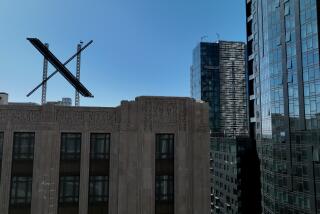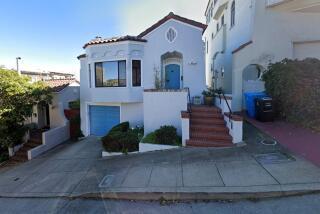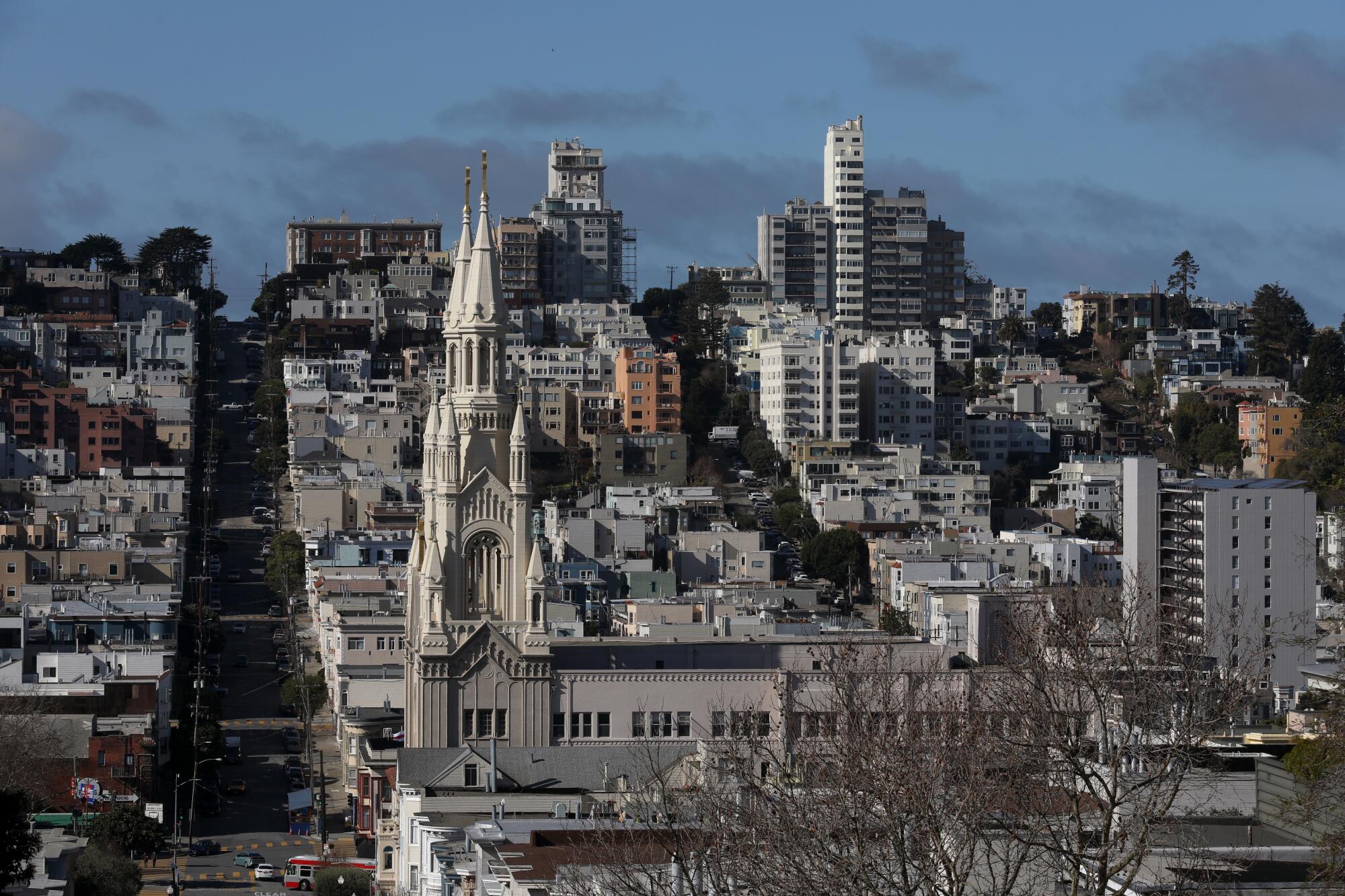
SAN FRANCISCO ‚ÄĒ Even on a foggy San Francisco morning, the view from Scott Simmons‚Äô 25th-floor apartment stretches from downtown to Golden Gate Park. The home of the 42-year-old tech worker is also spacious for a one-bedroom, featuring hardwood floors, new appliances and granite countertops.
A year ago, when he was sharing a two-bedroom place with his brother, Simmons couldn’t have imagined living in an apartment like this one. But last fall, when Simmons heard about big rent declines during the COVID-19 pandemic, he discovered he could get way more for his money in the heart of San Francisco than in the neighborhood where he was doubling up in Oakland.
‚ÄúIt‚Äôs bananas,‚ÄĚ Simmons said. ‚ÄúI never thought I was going to be someone who was going to have a nice view. It‚Äôs a luxury.‚ÄĚ
Since March, when government stay-at-home orders began emptying downtowns of workers and shoppers, the average rent for a one-bedroom apartment in San Francisco has dropped nearly 30%, the largest decrease in the country. The tech capital has hundreds of thousands of employees well positioned to work remotely, and they have. Outside the city.
The pandemic‚Äôs toll on San Francisco has created a scenario long unthinkable in the Bay Area. For some renters ‚ÄĒ mostly middle- and upper-income earners ‚ÄĒ it‚Äôs now more affordable to live in the famously expensive city than in its bluer-collar neighbor, Oakland.
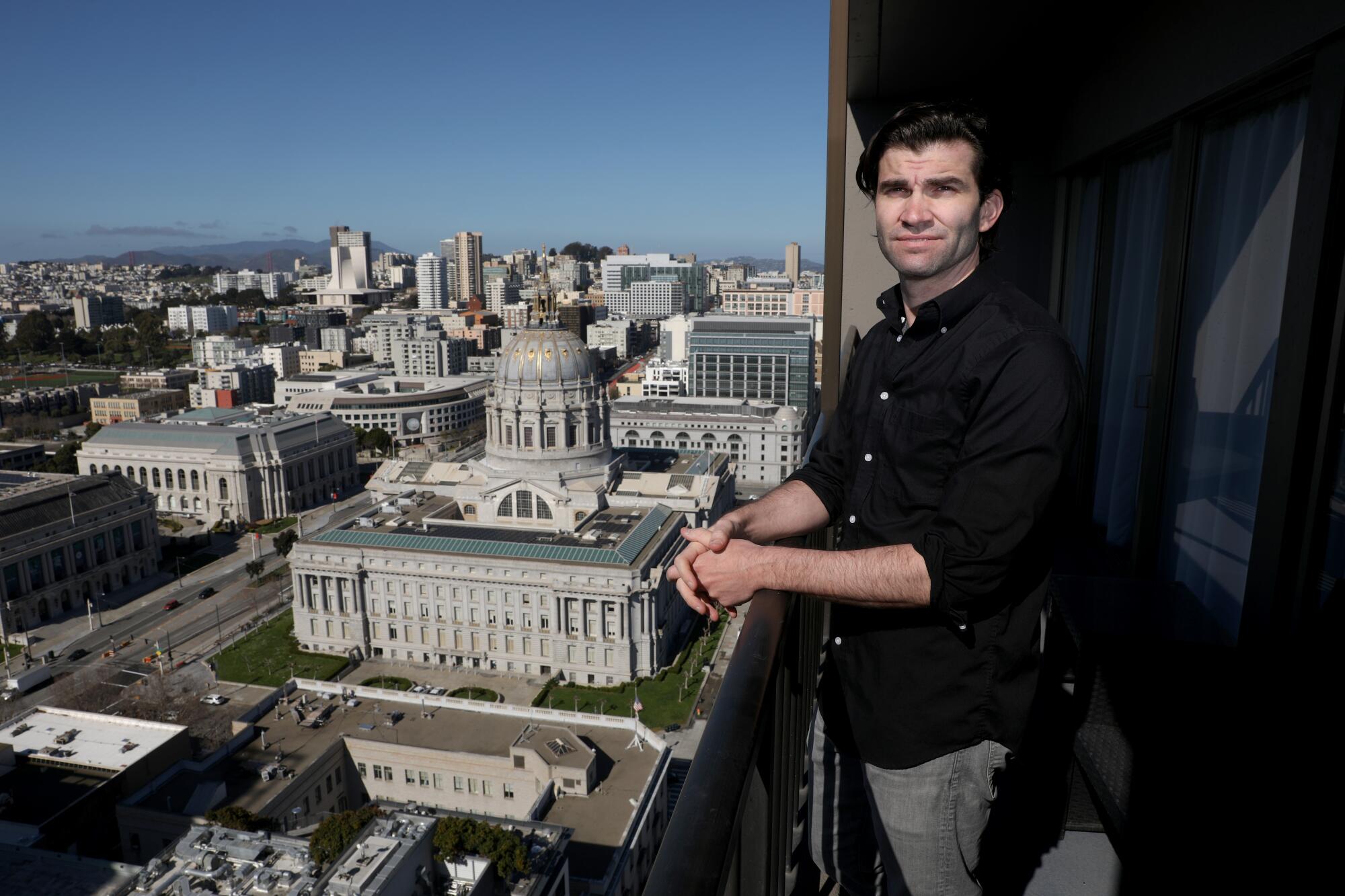
‚ÄúIf you would have told 15-year-old me that 15, 16 years down the road that Oakland was going to become more expensive it would have been literally shocking,‚ÄĚ said Amar Saini, 32, an Oakland native who moved into a 12-story apartment building near the Bay Bridge this month to save money. ‚ÄúI just don‚Äôt believe it.‚ÄĚ
San Francisco, even as rents decrease, remains the nation’s costliest big city. A one-bedroom apartment still typically rents for almost $2,000 a month, putting it far out of reach for many residents. But the steep drop in prices has surprised real estate watchers for both its depth and scale. Even landlords in tony neighborhoods like Pacific Heights and Russian Hill, who once were charging $4,000 a month for one-bedroom apartments, are lowering their prices and offering incentives like months of free rent to get tenants in the door.
The rent declines are a direct result of the pandemic. More than half the city‚Äôs employees are able to work remotely, according to the Bay Area Council Economic Institute, and tech firms like Twitter and Salesforce ‚ÄĒ the city‚Äôs largest private employer with more than 9,000 workers ‚ÄĒ have said employees can stay away from the office even after the pandemic ends.
Additionally, the pandemic has closed restaurants, bars and museums, while putting a premium on locales that offer people more space to work or their kids to attend school virtually. For San Francisco, a dense city that long has had some of the nation’s highest rents, all the changes have taken away many of the amenities that make city life vibrant. Data from the U.S. Postal Service show that 56,000 more people requested address changes out of San Francisco in 2020 than those moving in.
‚ÄúEvery man, woman and their dog is saying there‚Äôs no point living in downtown San Francisco if you‚Äôre not going into work,‚ÄĚ said Nicholas Bloom, an economics professor at Stanford University who is studying remote work during the pandemic.
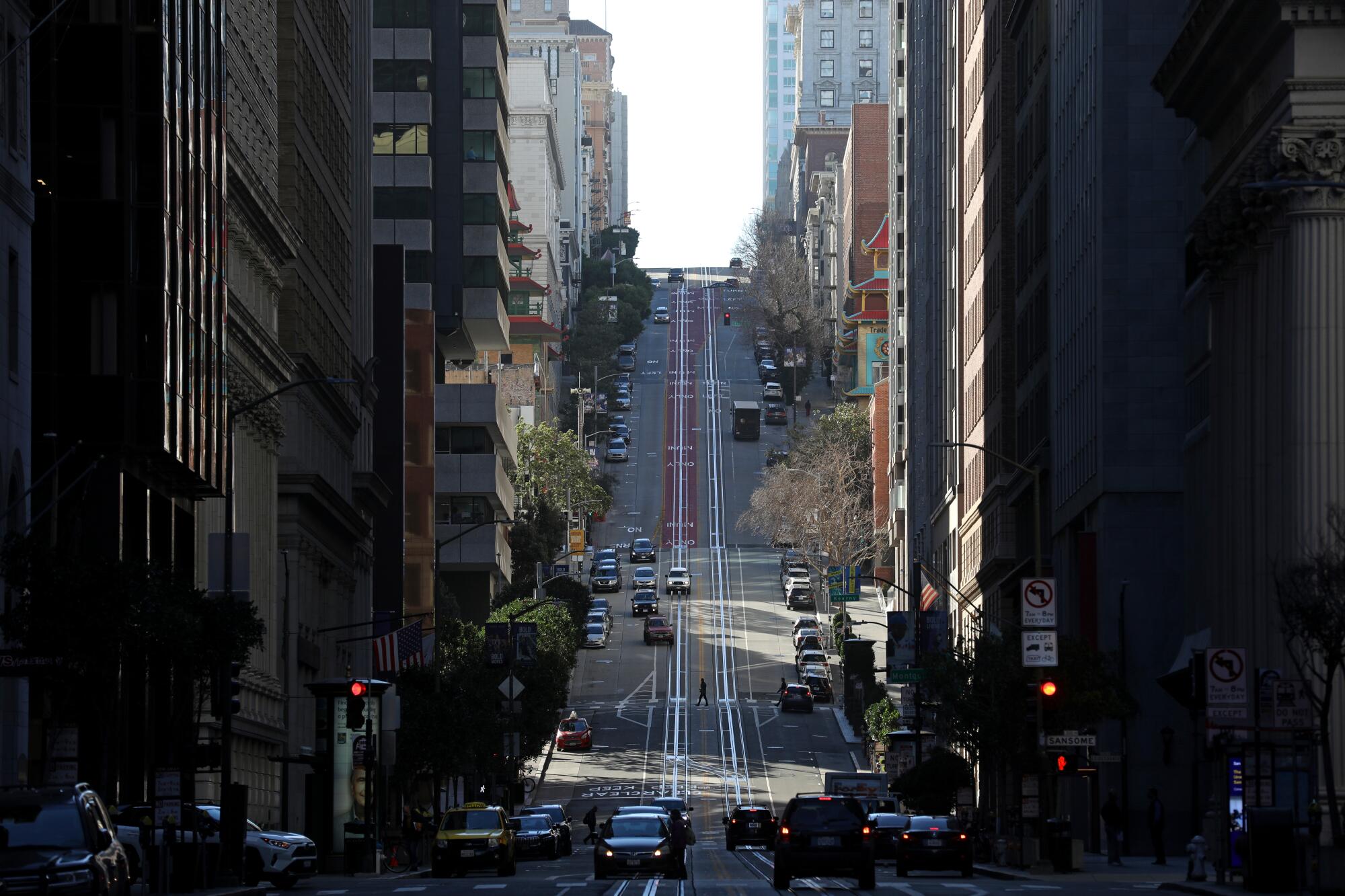
The stillness of once-bustling San Francisco neighborhoods can be jarring. In Union Square on a recent weekday, a handful of masked pedestrians and homeless residents roamed silently amid hotel lobbies, restaurants and luxury stores largely empty of customers. Closed businesses along Market Street, one of the city’s main commercial boulevards, were boarded up with plywood. Shops that remained open had signs displaying reduced hours.
A year ago, only about 1% of the units managed by members of the San Francisco Apartment Assn., the city’s largest landlord group, were vacant, said Janan New, its executive director. Now, she said, nearly a quarter are empty.
At a new, upscale apartment building across from Twitter’s headquarters on Market Street, the sales office is offering up to three months of free rent. If that’s not enough incentive, new arrivals can also get a year of free cable and internet, several personal training and massage sessions or have the landlord donate $1,000 to a local charity on the tenant’s behalf.
Such efforts to attract middle- and upper-income residents reflect the pandemic’s uneven economic impact. White-collar employees who are able to work from home have been far less affected than lower-income workers in service and hospitality industries.
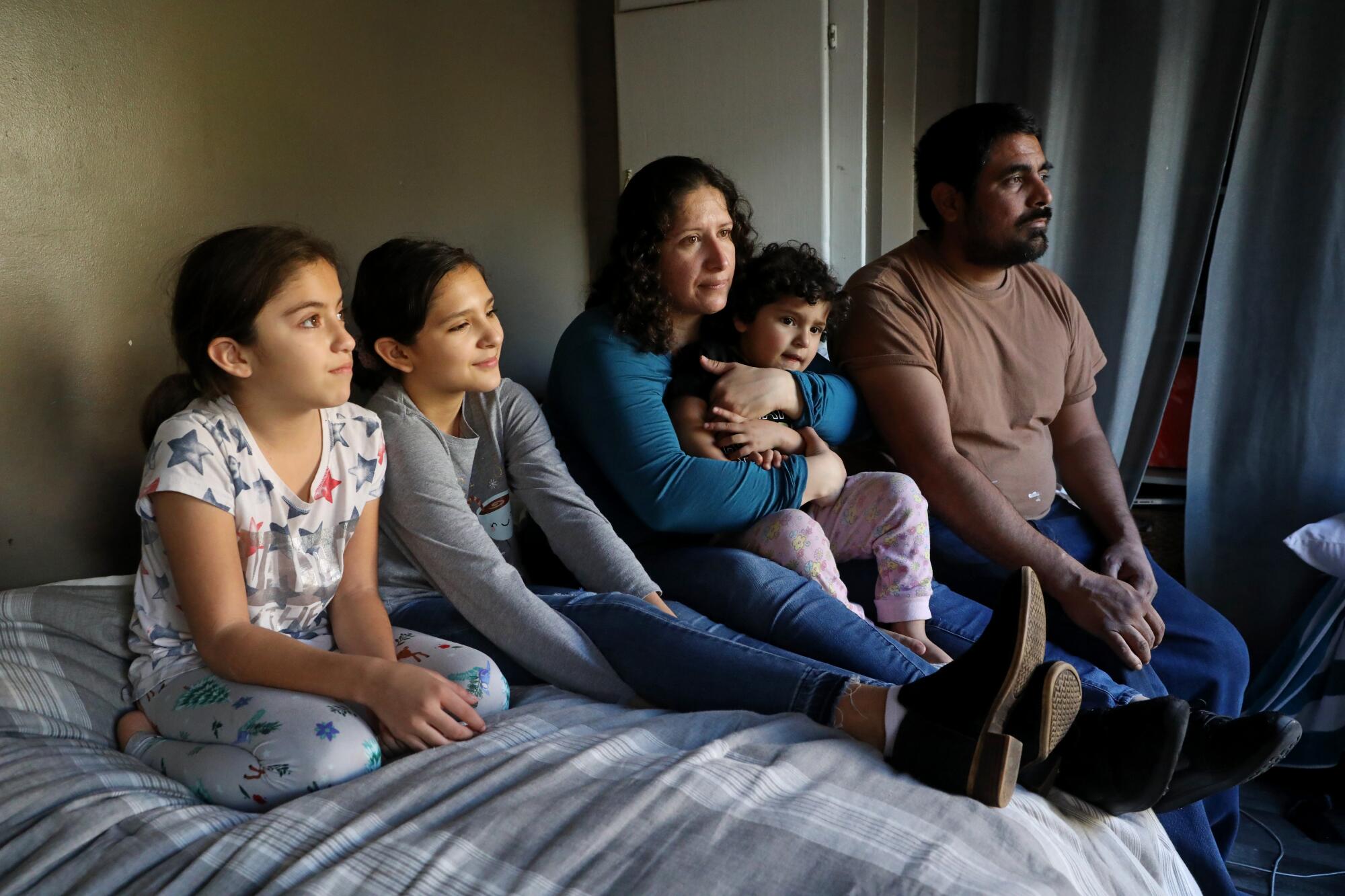
Maria Marin and her husband, Francisco Rodriguez, were once able to crowd into a one-bedroom apartment near Bayview with their three young daughters. But after the pandemic hit, Marin lost her job as a housecleaner, and then her husband got COVID-19 and lost his warehouse job.
Unable to pay the $2,000 monthly rent, the family moved in with Marin’s mother near Potrero Hill. Ten people now share the three-bedroom home while Marin and her husband seek employment.
‚ÄúIn my situation, it‚Äôs not true that the rent is down,‚ÄĚ said Marin, 35. ‚ÄúThey ask you to make two or three times the rent to qualify for an apartment. And when you don‚Äôt have it, they hang up the phone.‚ÄĚ
Rents have decreased in Oakland as well with the average one-bedroom now going for $1,625, according to Apartment List. But the 18% gap between Oakland and San Francisco prices is the narrowest since the real estate firm began tracking rents in 2017.
Before his move, Simmons enjoyed living in Oakland’s Uptown, a walkable community not far from the Fox Theater, and first looked for a new place around there.
But he found nicer apartments in San Francisco, and living there meant he could ditch his car. Simmons signed a lease for $2,800 a month in a 29-story building also across the street from Twitter. The landlord gave him $2,000 in debit cards as a bonus.
‚ÄúI like walking places. I like meeting people. I like the busyness,‚ÄĚ Simmons said. ‚ÄúThis is the life I want.‚ÄĚ
Soon after last spring’s stay-at-home orders went into effect, Armand Domalewski and his girlfriend decided to leave their roommates and look for an apartment together. They searched around Oakland’s Lake Merritt in the hopes of living near open space.
‚ÄúThen we looked in San Francisco,‚ÄĚ said Domalewski, 31, a data analyst. ‚ÄúNot only were the prices lower than I ever expected, they kept getting lower.‚ÄĚ
The couple found a bright, second-floor apartment on a narrow, red brick street near Duboce Triangle for just under $3,000. ‚ÄúI walked in and said, ‚ÄėThere‚Äôs a dishwasher, my God,‚Äô‚ÄĚ he said.
A few months into their lease, another tenant in their building moved out and they got a call from their landlord. Domalewski feared the worst.
‚ÄúYou‚Äôre so conditioned to think, ‚ÄėOh, my God, am I getting evicted?‚Äô‚ÄĚ he said. ‚ÄúAnd then she was like, ‚ÄėI‚Äôm unilaterally lowering your rent.‚Äô And we‚Äôre like, ‚ÄėThis is crazy.‚Äô‚ÄĚ
Rents have even become affordable for recent college graduates.
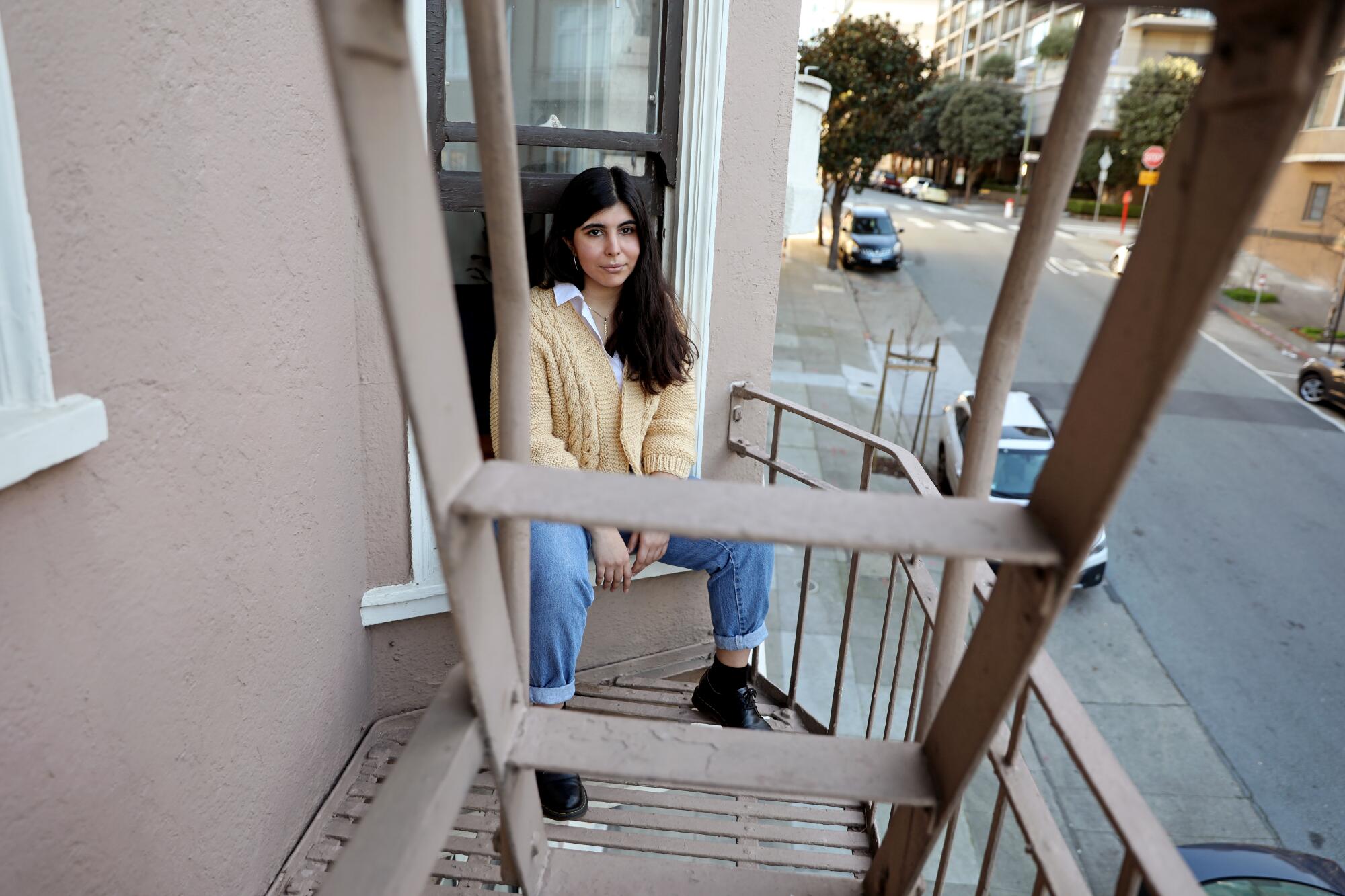
A few months after graduating from UC Berkeley, Sarah Abdeshahian got a job as an organizer with the Tenderloin Housing Clinic in San Francisco. She was astounded to be able to find her own one-bedroom apartment near the top of Nob Hill for $1,900 a month, a price that had been reduced by $400.
‚ÄúThe idea of an entire apartment to myself is an insane luxury to me,‚ÄĚ said Abdeshahian, 22. ‚ÄúI thought of San Francisco as a place where only wealthy tech people could live, not someone working at a nonprofit just out of college.‚ÄĚ
Even though rents have plummeted, they could bounce back. Tenants with long memories plan ahead.
Simmons said he could have moved into a newer apartment complex for the same money.
But he opted for an older building. It came with rent control.
More to Read
Sign up for Essential California
The most important California stories and recommendations in your inbox every morning.
You may occasionally receive promotional content from the Los Angeles Times.

